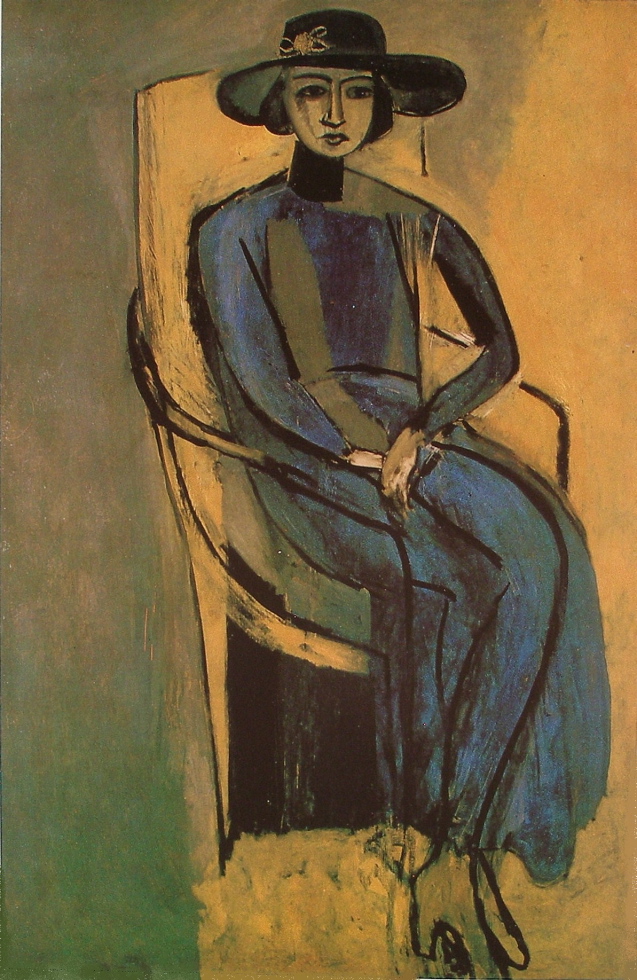In this delightfully reduced and and rhythmically distorted painting, Matisse has integrated the subject with line and shapes elegantly.
I love the rhythm of lines and how they integrate with the figure. Lets begin with the line at the top of the chair taking your eye across the rim of her hat, which then loops down to a vertical black line indicating the chair back at her left. Which then connects to a faint line that attaches to the left arm of the chair. The vertical front of the chair arm then integrates beautifully with her leg, taking us to the bottom of her dress. Matisse then provides us with lines leading us back to the top of the chair. This is just one of a few rhythmic paths for us to engage with.
There are a number of very interesting considerations in this painting. One that stands out is her shoes. Why do they blend with the background? The reason is Matisse wants your eye to move along the bottom of her dress or under the black shape. If he hadn’t blended them, they would be competing with these rhythmic lines, returning you to her eyes, and she is now gracefully floating.
Rhythm needs harmonious structure and Matisse has balanced them masterfully with a motif of rectangles holding the composition together beautifully. We first have the strong black one at the bottom under the chair, then another on her chest and a fantastic one under her chin. (They just need to have the sense of being rectangles.) How they hold the composition together is most impressive and I often think of this painting when I am working.
Two other great considerations in this painting are distortion and reduction, which comes to the forefront when an artist is thinking composition before information.
Ask yourself why? I will talk about this in future posts,

